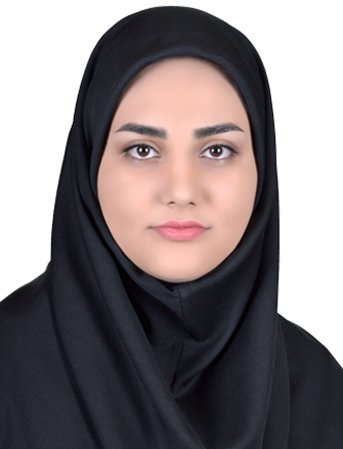- English
- فارسی
2015-Ahmadi.N.
Narges Ahmadi
Email: narcissus_7293@yahoo.com
- MSc, (2015-2018): Synthesis of (Ba-Ca)TiO3nanopowder and fabrication of polyvinyliden Fluoride- poly-vinyl alcohol - (Ba-Ca)TiO3 nanocomposite fibrous scaffold for bone tissueengineering
Abstract:
Restoration of bone defects and bone remodeling is one of the most important challenges in the present age. Bone tissue engineering is one of the best choices for the reconstruction of bone tissue. Today, the use of smart materials such as piezoelectric materials to accelerate the process of bone defect repair through the creation of pulses, in tissue engineering is increasing. The purpose of this research is to construct polyvinylidine fluoride-poly vinyl alcohol fibrous nanocomposite scaffolds: barium-calcium titanate and to characterize it. In this regard, first of all, barium-calcium titanate nanoparticles containing 0, 10, 20, 40, and 100% molar calcium substituted barium were synthesized by sol-gel method.By using X-ray diffraction pattern, scanning electron microscopy, Raman test and X-ray diffraction spectroscopy, calcium replacement was confirmed in the structure. Due to the replacement of calcium in more than 10 mol%, the secondary phase of calcium titanate was observed in addition to barium titanate. At the same time, this atomic substitution in excess of 10% molar resulted in a decrease in the size of the crystalline cell (about 2.2 times) and particle size (about 1.3 times) substitution of calcium in the structure of barium titanate also led to a constant dielectric of 288 (in pure barium-titanate) to 58 (in a sample containing 100% molar calcium). The bioactive properties of nanopowders were also assessed by immersion in a simulated body fluid. The results showed that substitution of calcium in barium titanate up to 40% mol caused a significant increase in the bioactivity of this material. In addition, the effect of calcium in the structure of barium-calcium titanate on the behavior of MG63 cells was investigated. The results of the MTT test showed that replacement of calcium ions in the structure of barium titanate for molar values higher than 10% could improve cell growth and proliferation. Accordingly, the results showed that barium-calcium titanate nanoparticles containing 10% molar calcium and 68 ± 12 nm particles had optimal biological and electrical properties. In the next section, the polyvinylidine fluoride-poly (vinyl alcohol) fibrous nanocomposite scaffold: barium-calcium titanate was made by electrospinning method. Also, the effect of adding different concentrations of barium calcium titanate nanoparticles (0.1, 2 and 5 wt%) on morphological changes, mechanical and biological properties of scaffolds were evaluated. The results showed that the addition of barium-calcium titanate nanoparticles up to 5 wt% increased the fiber diameter by 2 times (from 382 ± 41nm to to 778 ± 129 nm) and reduced the wetting angle with water by 1.3 times than pure poly (vinylidine fluoride-poly vinyl alcohol. Also, due to the agglomeration of the barium-calcium-titanate particles in the structure of the scaffold, the highest strength was observed in the sample containing 1wt% of the nanoparticle (8.1 ± 4.65 MPa). In addition, the presence of barium-calcium titanate nanoparticles in the scaffold caused the induction of its bioactive effect. It should be noted that according to the results of cytotoxicity test, the highest biodegradability (136 ± 3% control) was observed in scaffolds containing 1wt% of nanoparticles after 7 days of implantation of MG63 bone cells. Also, by increasing the amount of barium-calcium titanate nanoparticles (from 1 to 5% by weight) in the polyvinylidene-fluoride-poly vinyl alcohol fiber barium-calcium-titanate fibrous scaffold structure, the adhesion of MG63 cells increased. Accordingly, polyvinylidine fluoride-poly (vinyl alcohol) barium-calcium titanate nano-composite fibreboard scaffold can be a suitable scaffold for bone defect repair in bone tissue engineering.


